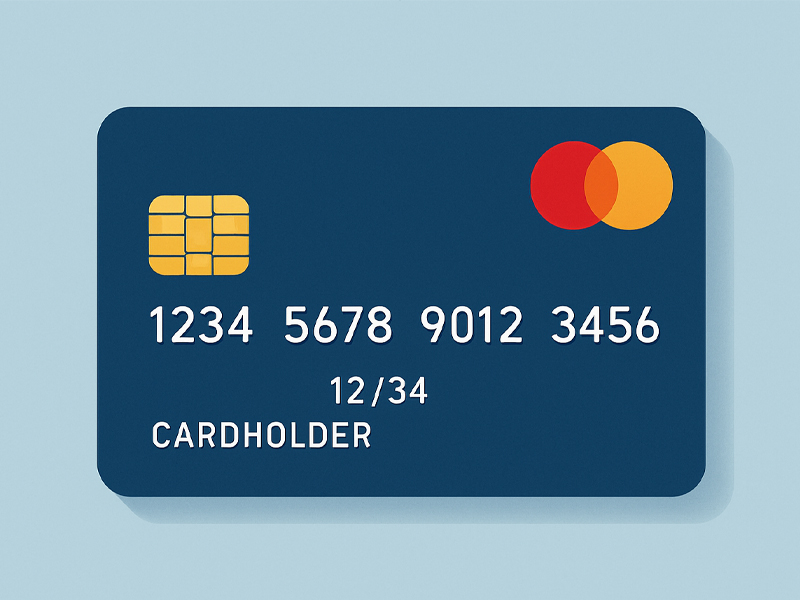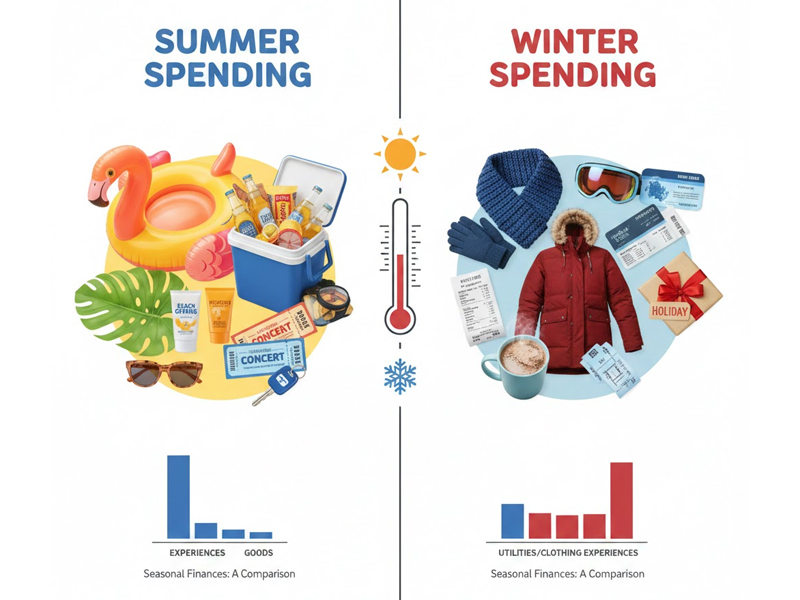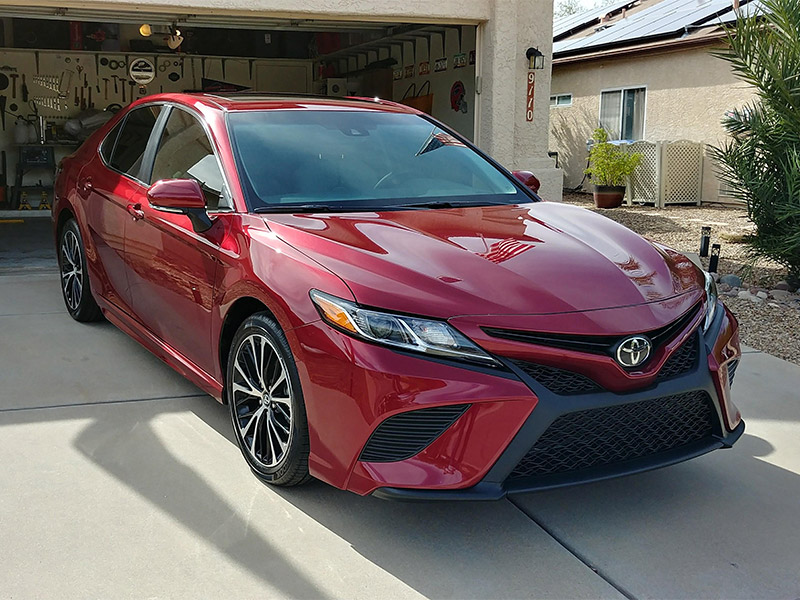Salary negotiation represents one of the highest-return activities you can engage in, yet most professionals leave tens of thousands—even hundreds of thousands—of dollars on the table throughout their careers due to negotiation avoidance or ineffective strategies. A single successful negotiation that increases your starting salary by $5,000 can compound to over $500,000 in additional lifetime earnings when accounting for raises, bonuses, and retirement contributions based on higher base salaries.
Despite these stakes, research shows that over 60% of professionals accept initial job offers without negotiation, while many others negotiate ineffectively by focusing on the wrong elements or using counterproductive tactics. This comprehensive guide provides proven strategies for maximizing compensation at every career stage, from initial job offers through promotions, performance reviews, and career transitions.
Understanding Total Compensation
Beyond Base Salary
Comprehensive Compensation Components: Total compensation extends far beyond base salary and includes multiple elements that can significantly impact your financial well-being:
Direct Financial Compensation:
- Base salary: Annual or hourly wage forming compensation foundation
- Signing bonuses: One-time payments for accepting positions
- Performance bonuses: Annual or quarterly bonuses based on individual or company performance
- Stock options and equity: Ownership stakes in the company with potentially significant value
- Profit sharing: Distributions based on company profitability
- Commission structures: Sales-based compensation for revenue-generating roles
Benefits and Perquisites:
- Health insurance: Medical, dental, and vision coverage with varying cost-sharing
- Retirement contributions: 401(k) matching, pension plans, profit-sharing contributions
- Paid time off: Vacation days, sick leave, personal days, and holidays
- Flexible work arrangements: Remote work options, flexible schedules, compressed workweeks
- Professional development: Training budgets, conference attendance, tuition reimbursement
- Life and disability insurance: Employer-paid coverage protecting income and family
Hidden Value Components:
- Location flexibility: Remote work eliminating commute costs and time
- Work-life balance: Reasonable hours and workload affecting quality of life
- Career development: Mentorship, advancement opportunities, and skill building
- Company culture: Work environment quality affecting job satisfaction
- Job security: Company stability and industry position
- Geographic location: Cost of living differences significantly impacting real compensation value
Calculating True Compensation Value
Comprehensive Valuation Method: To understand your true compensation, assign dollar values to all components:
Example Total Compensation Calculation:
- Base salary: $80,000
- Annual bonus (10%): $8,000
- 401(k) match (5%): $4,000
- Health insurance (employer portion): $8,000
- Dental and vision insurance: $1,200
- Life insurance: $500
- Paid time off (4 weeks valued at daily rate): $6,154
- Professional development budget: $2,000
- Stock options (estimated annual value): $5,000
- Total compensation: $114,854
This 43% difference between base salary and total compensation highlights why comprehensive evaluation matters for negotiation strategy.
Pre-Negotiation Preparation
Market Research and Data Collection
Salary Research Resources: Effective negotiation begins with comprehensive market data:
Online Salary Resources:
- Glassdoor: Employee-reported salaries with company and location specificity
- Salary.com: Detailed compensation data with customizable parameters
- Payscale: Personalized salary reports based on experience and location
- LinkedIn Salary: Industry and company-specific compensation insights
- Bureau of Labor Statistics: Government data on occupation compensation
- Professional associations: Industry-specific salary surveys
Research Best Practices:
- Geographic adjustment: Account for cost-of-living differences between locations
- Experience level matching: Compare salaries for similar experience levels
- Company size consideration: Larger companies typically offer higher base salaries but startups may offer more equity
- Industry variations: Compensation varies significantly across industries for similar roles
- Total compensation inclusion: Look beyond base salary to comprehensive packages
Understanding Your Leverage
Leverage Assessment Factors: Your negotiation leverage depends on multiple factors that should inform your strategy:
Supply and Demand:
- Skill scarcity: Rare or highly specialized skills increase negotiating power
- Market conditions: Economic conditions and industry health affect leverage
- Company urgency: Immediate needs increase willingness to negotiate
- Talent competition: Multiple offers dramatically increase leverage
Personal Leverage Elements:
- Alternative opportunities: Having other offers or current employment strengthens position
- Unique qualifications: Specialized experience or credentials relevant to role
- Network connections: Relationships with key stakeholders or internal advocates
- Performance track record: Documented achievements and results demonstrating value
Company Factors:
- Hiring process investment: Companies invest significantly in candidate evaluation
- Position criticality: More critical roles offer greater negotiation flexibility
- Budget flexibility: Some roles have more negotiation room than others
- Company culture: Some organizations expect negotiation while others have rigid structures
Personal Value Proposition Development
Articulating Your Worth: Effective negotiation requires clearly communicating your value to the organization:
Achievement Documentation:
- Quantifiable results: Revenue generated, costs saved, efficiency improvements
- Awards and recognition: Industry awards, company honors, peer recognition
- Unique skills: Specialized certifications, technical expertise, language skills
- Leadership experience: Team management, project leadership, mentorship
- Problem-solving examples: Specific challenges overcome and solutions implemented
Value Communication Framework:
- Situation: Context and challenges faced
- Action: Specific actions you took to address challenges
- Result: Quantifiable outcomes and business impact
- Relevance: How past achievements predict future value to prospective employer
Initial Job Offer Negotiation
Receiving and Evaluating Offers
Offer Evaluation Process: When receiving initial offers, avoid immediate acceptance or rejection:
Immediate Response Strategy:
- Express enthusiasm: Thank the employer and express excitement about the opportunity
- Request time: Ask for 2-3 days to review the complete offer
- Gather information: Request written offer details including all compensation components
- Avoid immediate acceptance: Never accept or reject on the spot regardless of offer quality
Comprehensive Evaluation:
- Total compensation calculation: Add all financial and benefit components
- Comparison with research: Measure against market data and expectations
- Long-term trajectory: Consider growth potential and advancement opportunities
- Non-financial factors: Work-life balance, culture, commute, and personal priorities
Negotiation Communication Strategies
Opening the Negotiation: How you initiate negotiation significantly impacts outcomes:
Effective Opening Approaches:
- Express continued enthusiasm: Reaffirm interest in the position and organization
- Frame as discussion: Position as collaborative conversation rather than adversarial demand
- Use objective data: Reference market research and industry standards
- Focus on value: Connect requested compensation to value you’ll provide
Example Opening Script: “I’m very excited about this opportunity and believe I can make significant contributions to [specific company goals]. I’ve done research on market compensation for this role given my experience and qualifications, and I was hoping we could discuss the compensation package. Based on my research and the unique value I bring, particularly [specific relevant experience], I was expecting a salary in the range of $X to $Y. Is there flexibility in the current offer?”
What to Avoid:
- Ultimatums: “I need $X or I can’t accept” creates adversarial dynamics
- Personal financial needs: “I need this to cover my expenses” focuses on your needs rather than your value
- Apologetic tone: “I’m sorry to ask, but…” undermines your position
- Lying about other offers: Fabricating competing offers can destroy trust and backfire
Negotiating Multiple Components
Strategic Component Negotiation: If base salary flexibility is limited, negotiate other valuable components:
High-Value Alternative Components:
- Signing bonus: One-time payment not affecting salary structure
- Performance bonus structure: Higher potential bonuses or more favorable metrics
- Equity grants: Stock options or RSUs with potentially significant value
- Earlier performance review: Accelerated timeline for raise consideration
- Additional PTO: Extra vacation days without affecting salary budget
- Professional development: Training budget, conference attendance, certification funding
- Remote work flexibility: Work-from-home days or full remote arrangements
Component Prioritization Strategy: Rank components by personal value and likelihood of employer flexibility:
- Items with low employer cost but high personal value (remote work, flexible schedule)
- One-time costs not affecting ongoing budget (signing bonus, relocation assistance)
- Performance-based compensation aligning employer and employee interests
- Base salary increases affecting long-term compensation
Handling Common Objections
“This is our standard offer”: Response: “I understand you have salary structures, and I appreciate that. Given my specific experience with [relevant achievement], is there flexibility to adjust for unique qualifications?”
“We need to see your performance first”: Response: “I’m confident in my ability to deliver results. Would you be open to scheduling a performance review at 6 months instead of the standard timeline, with salary adjustment based on demonstrated performance?”
“Our budget is fixed for this role”: Response: “I understand budget constraints. Are there other components we could discuss, such as signing bonus, stock options, or professional development budget, that might work within existing structures?”
“What’s your current salary?”: Response: “I’m looking to make a move that reflects my skills and the value I’ll bring to this role. Based on my research, I’m targeting compensation in the range of $X to $Y. Does that align with your budget for this position?”
Negotiating Raises and Promotions
Performance Review Preparation
Building Your Case Throughout the Year: Successful raise negotiation begins long before annual reviews:
Documentation Strategy:
- Achievement tracking: Maintain ongoing record of accomplishments, metrics, and contributions
- Email folder: Save positive feedback, client testimonials, and recognition
- Project outcomes: Document results of major initiatives and projects
- Learning and development: Track skills acquired and certifications earned
- Above-and-beyond examples: Note instances of exceeding role expectations
Quantification Whenever Possible:
- Revenue generated or protected
- Cost savings achieved
- Efficiency improvements (time or resource savings)
- Customer satisfaction improvements
- Team productivity enhancements
- Successful project deliveries
Timing and Approach
Optimal Timing Strategies:
- Annual review cycle: Traditional timing but often constrained by budget allocations
- After major achievements: Capitalize on momentum from significant wins
- Fiscal year transitions: Budget flexibility may be greater at certain times
- Market opportunities: When receiving external interest or offers
- Role expansion: When responsibilities increase significantly
Scheduling the Conversation:
- Formal meeting request: Schedule dedicated time rather than catching manager off-guard
- Preparation notice: Give manager advance notice of discussion topic
- Adequate time allocation: Request sufficient meeting time for thorough discussion
- Documentation provision: Share achievement summary before meeting when appropriate
Negotiation Framework for Raises
Raise Conversation Structure:
1. Performance Summary: Begin with comprehensive review of your contributions: “Over the past year, I’ve delivered significant results including [specific achievements with quantification]. These contributions directly supported our team’s goals of [relevant objectives].”
2. Market Research Presentation: Introduce objective salary data: “I’ve researched market compensation for my role and experience level, and I’ve found that the typical range is $X to $Y. My current salary of $Z is below this market range.”
3. Value-Based Request: Connect your achievements to requested compensation: “Given my performance and the market data, I’d like to discuss adjusting my salary to $[target], which I believe reflects both the value I’ve delivered and the market rate for this role. What are your thoughts on this?”
4. Discussion and Flexibility: Remain open to dialogue while maintaining your position: “I’m open to discussing the best way to structure this adjustment. Are there considerations I should be aware of regarding timing or structure?”
Promotion Negotiation Strategies
Proactive Promotion Pursuit: Don’t wait for promotions to be offered—actively pursue advancement:
Promotion Readiness Demonstration:
- Current role mastery: Consistently exceed expectations in present position
- Next-level work: Already performing responsibilities of target role
- Leadership demonstration: Taking initiative on projects and mentoring others
- Business impact: Delivering results affecting broader organizational goals
Promotion Discussion Framework: “I’d like to discuss my career progression and advancement to [target role]. Over the past [timeframe], I’ve been operating at the level of that role by [specific examples]. I’ve also taken on additional responsibilities including [examples]. I’d like to understand what would be required to formalize this advancement and discuss appropriate compensation for the expanded role.”
Career Transition Negotiation
Leveraging Competing Offers
Ethical Use of Multiple Offers: Multiple offers provide powerful leverage when used appropriately:
Appropriate Disclosure:
- Honesty requirement: Only mention actual, genuine offers
- Timing consideration: Inform all parties of decision timelines
- Respectful communication: Acknowledge each opportunity professionally
- Privacy maintenance: Don’t share excessive details about competing offers
Negotiation Approach: “I wanted to update you that I’ve received another offer that I’m seriously considering. I’m more excited about the opportunity with your company because [genuine reasons], but the compensation difference is significant. Is there any flexibility in your offer that would make the decision clearer?”
Counteroffers from Current Employers
Evaluating Counteroffers: When resigning triggers counteroffers, evaluate carefully:
Counteroffer Considerations:
- Long-term implications: Counteroffers often represent short-term retention tactics
- Trust impact: Employers may question loyalty after resignation
- Original motivations: Address whether counteroffer resolves reasons for leaving
- Advancement prospects: Consider whether long-term opportunities have changed
- External opportunity: Evaluate potential damage to relationship with new employer
Decision Framework: Accept counteroffers only when:
- Compensation was the sole reason for leaving
- Employer demonstrates genuine commitment to long-term partnership
- Promotion or role change addresses career development concerns
- No trust has been damaged with prospective employer
Generally Decline When:
- Cultural or management issues motivated departure
- Career advancement opportunities remain limited
- New opportunity offers significantly better long-term prospects
- Trust relationship with new employer would be damaged
Negotiation Tactics and Psychology
Anchoring Effect
Strategic First Offers: The first number mentioned often anchors subsequent negotiations:
Using Anchoring Advantageously:
- Research-based anchor: Begin with number supported by market data
- Range provision: Provide range with your target near the middle
- High but reasonable: Anchor high enough to maximize outcome but not so high as to seem unreasonable
- Confidence projection: Present anchor with confidence and supporting rationale
Responding to Employer Anchors: When employers anchor with initial offers:
- Acknowledge without acceptance: “Thank you for the offer. I’d like some time to review the full package.”
- Reframe discussion: “I was expecting compensation more in the range of $X to $Y based on market research.”
- Return to value: “Given my experience with [specific relevant skills], I believe a salary of $Z would be more appropriate.”
Silence as a Tool
The Power of Pause: Strategic silence can be powerful in negotiations:
When to Use Silence:
- After stating your desired compensation
- When employer makes counteroffer
- After employer raises objections
- During difficult conversations
Why Silence Works:
- Creates space for employer to respond without defensiveness
- Demonstrates confidence in your position
- Allows employer to volunteer improvements without pressure
- Prevents premature concessions
The “Flinch” Technique
Expressing Surprise Appropriately: Visible disappointment at low offers can prompt improvements:
Appropriate Flinching:
- “I appreciate the offer, though I was expecting something higher based on my research and the market for this role.”
- “That’s lower than I anticipated given my qualifications and the responsibilities of the position.”
- “I’m somewhat surprised by that number given the scope of the role we discussed.”
Avoid Dramatic Reactions: Subtle disappointment works better than dramatic expressions that may seem unprofessional or manipulative.
Common Negotiation Mistakes
Mistake 1: Negotiating Too Early
The Problem: Discussing compensation before establishing value and receiving formal offers weakens position.
The Solution: Deflect early compensation questions with: “I’m focused on finding the right fit and learning more about the role. I’m confident we can agree on appropriate compensation once we’ve established mutual interest.”
Mistake 2: Revealing Current Salary
The Problem: Current salary may anchor negotiations below market value, especially if you’re underpaid.
The Solution: Redirect to target compensation: “I’m looking for compensation in the range of $X to $Y based on the market and the value I’ll bring to this role.”
Mistake 3: Accepting First Offers
The Problem: First offers often leave room for improvement; immediate acceptance eliminates negotiation opportunity.
The Solution: Always engage in discussion even with strong offers to ensure optimal outcomes.
Mistake 4: Negotiating Without Alternatives
The Problem: Lacking alternatives significantly weakens leverage and confidence.
The Solution: Maintain active job searches and current employment until accepting new offers.
Mistake 5: Focusing Only on Salary
The Problem: Ignoring other valuable compensation components leaves significant value on the table.
The Solution: Negotiate comprehensive packages including benefits, equity, flexibility, and development opportunities.
Special Situations and Considerations
Gender Pay Gap Navigation
Persistent Disparities: Research consistently shows women negotiate less frequently and less aggressively than men, contributing to pay disparities.
Strategies for Women:
- Research and data emphasis: Ground requests in objective market data
- Value focus: Emphasize contributions and results rather than personal needs
- Collaborative framing: Use “we” language while maintaining clear requests
- Mentorship and advocacy: Build relationships with sponsors who advocate for fair compensation
Remote Work Negotiation
Geographic Flexibility Value: Remote work arrangements have significant financial and quality-of-life value:
Negotiation Approach:
- Quantify savings: Calculate commute cost and time savings
- Productivity evidence: Reference studies showing remote work productivity benefits
- Trial period proposal: Suggest test period demonstrating successful remote work
- Hybrid solutions: Negotiate flexible schedules if full remote isn’t possible
Equity and Stock Options
Understanding Equity Compensation: Equity negotiations require understanding complex structures:
Key Considerations:
- Vesting schedules: Understand timeframe for equity access
- Strike price: Exercise price relative to current valuation (for options)
- Company valuation: Realistic assessment of company worth and growth potential
- Dilution factors: How future funding rounds may affect ownership percentage
- Tax implications: Tax treatment of different equity types
Negotiation Strategy:
- Request more shares if base salary is constrained
- Negotiate shorter vesting periods
- Understand acceleration provisions upon acquisition or IPO
- Evaluate equity against cash compensation alternatives
Post-Negotiation Best Practices
Getting Agreements in Writing
Documentation Importance: Always obtain written confirmation of negotiated terms:
Essential Documentation:
- Formal offer letters including all compensation components
- Email confirmations of verbal agreements
- Updated employment contracts reflecting changes
- Performance review documentation with agreed-upon targets
Starting Strong
First 90 Days Strategy: Successful negotiation should be followed by exceptional performance:
Demonstrating Value Immediately:
- Quick wins showing immediate contribution
- Relationship building with key stakeholders
- Understanding organizational priorities and aligning efforts
- Regular communication with manager about progress and impact
Planning Next Negotiation
Continuous Preparation: Begin preparing for future negotiations from day one:
Ongoing Activities:
- Achievement documentation and quantification
- Market research and salary tracking
- Skill development and certification pursuit
- Network expansion and relationship building
- Industry awareness and trend monitoring
Conclusion: Maximizing Lifetime Earning Potential
Effective salary and benefits negotiation throughout your career can generate hundreds of thousands of dollars in additional lifetime earnings. The key lies in viewing negotiation not as a one-time event but as an ongoing professional practice requiring preparation, confidence, and strategic execution.
Remember that negotiation is expected and respected in professional contexts. Employers anticipate negotiation and often build flexibility into initial offers. By failing to negotiate, you’re not just accepting lower compensation—you’re potentially signaling that you don’t understand your own value or the professional norms of business negotiation.
Start building your negotiation skills today by researching your market value, documenting your achievements, and practicing negotiation conversations with mentors or peers. Every negotiation opportunity represents a chance to significantly impact your financial trajectory and career advancement. The investment in developing these skills pays dividends throughout your entire professional life.









